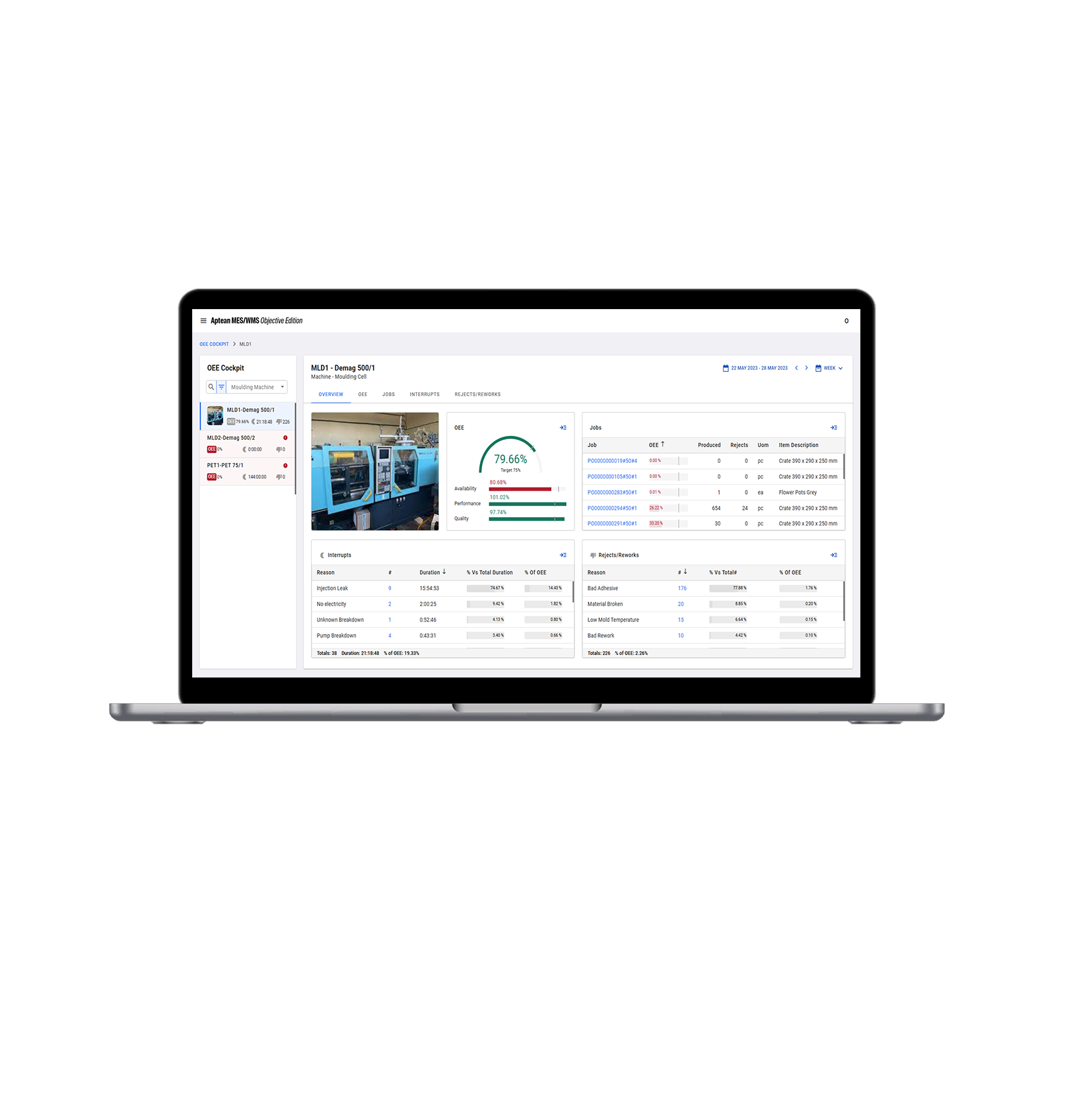Cloud Manufacturing ERP: Connecting Your Manufacturing Business in a Virtual World
Cloud Manufacturing ERP: Connecting Your Manufacturing Business in a Virtual World
Cloud Manufacturing ERP: Connecting Your Manufacturing Business in a Virtual World
12 März 2021
 Jim Tuttle | Senior Solutions Consultant
Jim Tuttle | Senior Solutions Consultant
So many everyday moments have changed in the past 12 months. No more shaking hands. Conversations take place via video screens. The ‘commute’ is from the bedroom to the living area. And many of these new conventions are unlikely to return to ‘normal’ any time soon.
According to PwC, 54% of CFOs plan to make remote working a permanent option post-COVID-19. This shift is easy enough to manage in some sectors—but what about industries like manufacturing, where you need an in-person operation?
Bringing the physical and digital worlds together is something that manufacturers thought about pre-pandemic, but now it’s an urgent priority. And it is migration to the cloud with enterprise resource planning (ERP) that’s enabling manufacturers to quickly and flexibly connect their business in an increasingly virtual world.
Manufacturing Is Not a Static Industry
Unlike service-based industries, the making of products involves people collaborating in-person. And for those people who are stillphysically going to work, the current focus is making the manufacturing environment COVID-safe.
The good news is that 79% of industrial products companies are confident that they can provide this. But businesses need to think beyond basic elements like staggered shift patterns, extra cleaning and social distancing. How can we use the complete disruption of the past 12 months to make life better for the manufacturing workforce?
For people on the shop floor, it’s all about digitization. Moving away from paper forms and manual handovers to a production line powered by technology. Investing in cloud-based manufacturing ERP software that integrates data and automates processes, so there’s less need for physical contact. Software that delivers insights direct to people’s workspace, in real time.
We also need to think about what that workspace looks like. Manufacturing is not a static industry—and cloud technology is taking mobility to the next level. Remote connectivity is enabling personnel to access information from their smartphone or tablet from any location; wherever they are, they’re always-on.
Taking Entire Sections of the Business Virtual
Digitizing the factory environment is challenging enough, but manufacturers also need to account for those people who can do their job from home. As I already mentioned, many organizations plan to make remote working a permanent arrangement. So, how do we connect people who are disparately located?
Cloud strategy is critical here. Investing in manufacturing ERP technology that enables reliable communications and complete data visibility. If someone can see what’s happening and act on it, wherever they are, manufacturing businesses aren’t restricted by four walls anymore. And this expands the realm of possibility.
By connecting people virtually, manufacturers can create new set-ups that enable lean, scalable growth. Scenarios where multiple automated machines are managed remotely by one person; they might not be physically on the shop floor, but they can easily view machines, reach out to colleagues and get accurate production updates whenever they need.
That same remote connectivity can also be used to power higher level decisions. Putting analytics and reports into the hands of senior executives. And giving manufacturers the ability to expand into new locations and territories, even if they don’t have a full workforce on the ground from the start.
Additionally, it creates the capacity to make entire sections of the business virtual—running back-office roles centrally, to serve the whole organization. With a cloud manufacturing ERP, people can create sales orders, run schedules, order components and manage customer relationships from wherever they want.
Manufacturing Is a Responsive Industry—and We Need To Act Now
I’m sure many of us would like to shake hands again one day soon, but we shouldn’t rush back to the old world. After the pandemic’s seismic disruption, manufacturers have an opportunity to undergo metamorphosis—coming back leaner, stronger and more agile.
From a strategic perspective, this means investing in a remote working strategy that will keep costs down without compromising quality of work. A strategy that supports growth, rather than creating barriers. And this strategy starts in the cloud.
A cloud-based manufacturing ERP is the key to enabling virtual integration, creating business-wide data visibility and automation between systems. For some manufacturers, this will be an extension of plans that were already in place pre-COVID. For others it will be a massive structural shakeup. It doesn’t matter either way.
The most important takeaway from the last 12 months is that manufacturing is a responsive industry. We can adapt quickly. And cloud ERP is critical to continuing this speed of change.
We’re not just relying on ERP to recover from the impact of COVID-19. The manufacturing industry is using technology to connect the future workforce anywhere, at any time, so they can do the best possible job.
How do we know this? Because Aptean’s Industrial Manufacturing ERP is already enabling multi-site organizations to see and react to everything that’s going on in their business.
By moving to the cloud through Aptean Industrial Manufacturing ERP, you can increase mobility, take your business remote with cloud ERP and build a scalable platform for company growth.
Get in touch to talk to one of our cloud ERP experts about Aptean’s cloud-based manufacturing ERP.
Or, if you'd like to keep reading, check out our breakdown of the pros and cons of both on-prem and cloud software or this list of 10 questions to ask when transitioning to the cloud.
Beginnen Sie noch heute mit der Transformation Ihres Unternehmens
Sie möchten Ihr industrielles Fertigungsunternehmen weiterentwickeln? Wir helfen Ihnen gerne dabei.



